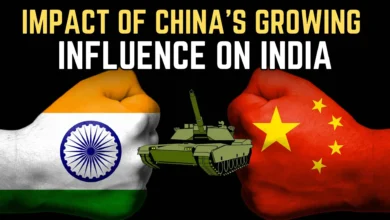Total Quality Management – Principles, Benefits, Pros & Cons
TQM Principles
TOTAL QUALITY MANAGEMENT TOOL
INTRODUCTION
Have you ever bought something with full excitement and have preplanned how will you use that product or service; you get carried away in your dreamland enjoying the experience you might get while using that something (product/service) you’ve bought.
Suddenly you encounter that the product/service is defected or is faulty, here is the point where companies lose their customers. The expectations set are not met by the company and the value for money is taken for a toss, then what’s next – an irritated customer, negative word of mouth publicity and a lost brand image.
Hence, quality plays a vital role in retaining customers and building a brand name which is undisputed. Companies like Apple, Rolls Royce, Louis Vuitton, FedEx, etc. have built a strong brand value by delivering products and services with utmost quality.

What is Quality? How is it maintained?
The usual response to “What is Quality?” is – durability of product, reliability, inspection, standardization or if we come across a smart kid; he’ll answer it as “Responsibility of the Quality Control Department”. But trust me, quality is much more than delivering a good product/service. It is a science-based on proven statistical approach and philosophy which governs quality.
Let’s try and understand…
QUOTES
“Quality is more important than quantity. One home run is much better than two doubles.” – Bill Gates
“Quality in a service or product is not what you put into it. It is what the client or customer get out of it.”- Peter Drucker
DESCRIPTION – Let’s take a Deep Dive
The roots of Total Quality Management can be traced back to 1920s, here the seeds of quality management were planted and it was considered as the Principles of Scientific Management in the US industry, back then. In the 1930s, Walter A. Shewhart an American physicist, engineer and statistician also known as the father of statistical quality control developed statistical analysis and control of quality methods.
Shewhart taught the methods developed by him to Joseph M. Juran and W. Edward Deming who later on became the successors who promoted “Control Theory” and gave their contribution in the subject. In 1938, Deming organized a seminar on Statistics at NYU where Shewhart delivered a 4 days’ lecture on “Control Theory”. Application of this theory to 1940 US census by Deming resulted in savings approximately $200 million.
This theory also helped America in increasing its productivity of war weapons and ammunition during World War 2. Later in 1945 after World War 2 Japan was facing a crisis, then America asked Deming to travel to Japan and lead the census taking place over there.
Deming who frequently travelled to Japan taught the “control theory” to Japanese engineers and executives. This is considered as the origin of Total Quality Management. Companies like Toyota can be seen as an example of what success TQM can bring in for a company.
Today, TQM can be termed as an approach which organizations use for overall development by improving internal process and primary focus is on increased customer satisfaction. The management and employees work closely, where they are involved in the continuous improvement of the production of products and services. A combination of management tools and quality which is aimed at increasing business and reducing losses by eradicating waste from operations is TQM in the modern world.
The simple objective of TQM is “Do the right things, right the first time, every time.”
Principles of TQM
Focus on the customer: Activities planned and performed in an organization are done with the customer in mind.
Employee Involvement: Empowering employees to deliver their best where they work toward common goals and providing them with a workplace where they can operate free from fear.
Process Centered: Drafting processes that have proper input and can turn them into output, which guides the employee to deliver optimum results. Through such processes employees can consistently create high-quality products regardless of the people involved.
Integrated System: Small processes should be integrated into one large process and everyone must be on the same page, to achieve this system are designed and implemented.
Strategic and systematic approach: Formulating strategic plans that include quality integration as a fundamental component, this is a very crucial task done by companies.
Continuous Improvement: New methods which can increase product competitiveness and efficiency should be used by managers and employees. They should be looking for effective methods to gain better results.
Fact-based decision-making: The decision made by the managers should be based on the data collected, the data is then evaluated on parameters to find loops. Statistical analysis helps in taking decisions which are based on facts and figures.
Communication: Employees, Managers and Owners should communicate routinely and frequently to help maintain morale and boost motivation.
A central principle of TQM is that mistakes or faults may be made/caused by people, but most of them are permitted by or are an outcome of faulty systems and processes. However, the root cause of such mistakes can be eliminated by identifying them. Once the loops are identified, the repetition of mistakes can be prevented by making necessary changes in the process. The major mechanisms of prevention are:
- Poka-yoke(mistake-proofing): Preventing defects from occurring.
- Inspection at the source: The places where mistakes can’t be absolutely prevented the organization should work towards detecting them early to prevent them from occurring. This should be done before the results of the mistake is passed down the value-added chain.
- Stop in Time: The nodes where mistakes recur, the production should be stopped until the process is corrected. This is done to prevent more defects in the production process.
What is the most popular TQM process?
There are three popular TQM processes and now that you know the history of TQM, what is total quality management, it’s principles. Let’s dive deeper into three processes that were built on its original principles. These processes are ISO 9000, Lean manufacturing and Six Sigma.
1. ISO 9000: It focuses on people
ISO 9000 was first published in 1987, by the International Organization for Standardization. It is necessary for any organization to be ISO 9000 certified to become world-class and it encompasses an entire family of quality management systems standards. The seven principles which form the base of ISO 9000 are:
- Customer focus: Companies should focus on meeting customer expectations and it should be the only first and foremost motive.
- Process-centric: Management of all activities and resources should be done as a system-wide process.
- Leadership: To drive companies toward their objectives and maintain the right internal environment, good leaders are required.
- Improvement: Continuously and actively seeking improvement should be the only motive of any company.
- Engagement of people: Employees must communicate with each other and must be empowered to take full advantage of their abilities.
- Evidence-based decision-making: Statistical analysis serves as a piece of evidence in taking decisions which are based on facts and figures.
- Relationship management: Maintain mutually beneficial and healthy relationships with contractors, suppliers and service providers helps in the growth of a business.
How is ISO 9000 different from TQM? ISO 9000 shares many TQM principles but the focus of ISO 9000 is more on leadership in an organization and people management. ISO 9000 is used when a company believes that it’s operation needs better leadership.
2. Lean manufacturing: It focuses on waste minimization
Lean manufacturing is a methodology that focuses on eliminating waste and inefficiency within manufacturing systems while continuously producing products at the same (or even higher) level. Toyota developed this systematic method and it seeks to identify things that add value, as well as those that don’t and eliminate the ones that don’t.
Seven types of waste are defined under Lean Manufacturing:
- Transport: The wastage caused in the transit of goods.
- Inventory: Limited inventory should be maintained which caters the production requirement.
- Motion: Equipment or people should move only when required, there should not be unnecessary movement which is not required in the production process.
- Waiting:The waiting time or Inactivity before the next production step is a wastage and can be eliminated.
- Overproduction: Wastage caused due to producing more than what is required.
- Over-processing: Using more time and effort than what is necessary to produce the end product is a waste.
- Defects: Resolving problems in the finished product and spending too much time on it is also a waste of resources.
How is lean manufacturing different from TQM? Lean manufacturing emphasizes more on identifying inefficiencies in the manufacturing process, whereas TQM emphasizes more on promoting an organization-wide quality management. Companies use Lean Manufacturing when they believe that production inefficiencies are decreasing their revenue.
3. Six Sigma: Focuses on the process
Six Sigma was developed at Motorola in the 1980s is a set of techniques for improving on processes in an organization. This method is used to improve product quality which is done by identifying and eliminating variability in the manufacturing process that can cause defects.
Projects based on Six Sigma follow two methodologies, each with five phases:
DMAIC:
- Define the system. Assess what the customer wants.
- Measure key aspects of the current process. Data collection.
- Analyse the data. Determine the cause of a defect through statistical analysis.
- Improve the current process. Create a new process based on the analysis.
- Control the future state process. Control systems should be in place to constantly monitor the process.
DMADV:
- Define the design goals. Assess what the customer wants.
- Measure and identify characteristics that are critical to quality. Data collection.
- Analyse the data. Develop and design alternatives.
- Design an improved alternative. Problem fixing.
- Verify the design. Implement the production process and then keep monitoring it.
How is Six Sigma different from TQM?
TQM takes a holistic view of the organization and Six Sigma focuses on the manufacturing process. Companies use Six Sigma when they think their manufacturing process is the one that needs the most attention and improvement within their company.
Benefits of TQM
Benefits for the customer:
1. Reduced problem and defects in the product or service customers purchase.
2. As TQM is focused on customer satisfaction, there is an increase in attention given to the customers
3. With better quality product customers are happy and satisfied.
Benefits for the Organization:
1. Improve ability and adaptability to cater to market changes.
2. Strong competitive position in the market and empowerment.
3. Enhanced brand image and more appreciation from the market.
Benefits for institutions:
1. Reduction in manufacturing of defective products
2. Increase in productivity
3. Staff feels motivated as the product and services are appreciated in the market.
4. Better cost management with lower costs.
5. Problems can be solved quickly
Advantages of Total Quality Management
- Sharpens Competitive Edge of the Enterprise:
An organization can reduce costs or lower them by the elimination of waste, rework etc. Using TQM results in increased profitability and competitiveness of the enterprise. It also helps to sharpen the organization’s competitive edge, in the globalized economy of today.
- Excellent Customer Satisfaction:
TQM focusses on customer requirements and processes are designed to deliver excellent customer satisfaction. Which leads to more sales with an increase in revenue and excellent relations with customers.
- Improvement in Organizational Performance:
TQM promotes “quality” as a culture in the organisation, which lead to improvements in the performance of managerial and operative personnel.
- Enhanced Public Image of the Enterprise:
Due to stress on quality systems and focus on customers’ requirements, TQM helps to build an image of the enterprise.
- Better Personnel Relations:
Promoting mutual trust and openness among employees at all levels in the organization leads to better personnel relations in the enterprise.
Disadvantages of Total Quality Management
- Companywide commitment for quality improvement: TQM can be made successful only if the employees from all levels in the organization show equal commitment to quality improvement. If there is a lack of effort at any level, it may lead to negative ripples throughout the organization and will undermine the TQM program.
- Significant changes in an organization are required: To implement TQM; change in methods, processes, the attitude of management, change in behaviour of employees, etc. is required.
- Time-consuming: TQM cannot be implemented overnight, it requires extensive analysis and time to rework on the processes and implement them.
- Ignorance caused by a change in leadership: If a leader leaves the organization, quality is subjected to be ignorance with new management coming into action. TQM requires a special corporate culture.
- Resistance to Change: Workers may have a misconception that their job in the company is at risk under a comprehensive TQM program. As a result, the workers may be slow or resistant to making the necessary changes for the TQM program.
CONCLUSION
With the increase in technology, there is a shift in the demand side. Customers are asking for a more durable, reliable product which delivers value for money. TQM is a proven program that organizations have deployed in order to attain efficiency. TQM help in achieving streamline processes which prove to be a competitive advantage for organizations over others in this highly competitive marketplace. This competitive edge can be achieved in fields like service delivery, operations, quality and reduced costs. Which in turn results in increased revenue for organizations.
Author – Snehal Namade
Must Explore





Really nice and you explains everything detail. The article is very interesting and effective and this one very informative. You are doing very great job,keep it up..